QCF: Metroid Dread
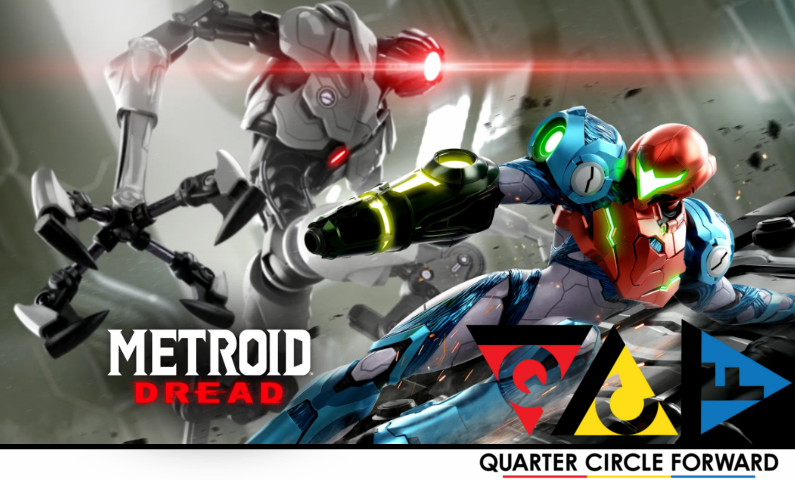
 ver time the Nintendo property lineup has operated as a stable of derby horses and their respective console launch being a race circuit for them to compete in. As the crowds pour in to back these figurative stallions with their money, there’s always been one Dark Horse in the stable that has straddled the line between stardom and obscurity—Metroid; a property that’s inspired droves of games, and yet has lied dormant for more than a decade between releases.
ver time the Nintendo property lineup has operated as a stable of derby horses and their respective console launch being a race circuit for them to compete in. As the crowds pour in to back these figurative stallions with their money, there’s always been one Dark Horse in the stable that has straddled the line between stardom and obscurity—Metroid; a property that’s inspired droves of games, and yet has lied dormant for more than a decade between releases.
After the mild success of Samus Returns for the 3DS, Nintendo enlisted the studio MercurySteam once more for another 2D side-scrolling entry for the series, Metroid Dread, resurrecting the project for the Nintendo Switch years after its sordid past of setbacks and letdowns. Despite the baggage that the name comes with, however, this may be one of the best collaborations that Nintendo has ever achieved with another studio as Metroid Dread is not only one of the best games to have released this year—it stands to be the best entry of the 35-year-old franchise.
Now, that’s a pretty tall statement right? How could Dread be so remarkable when the Metroid series, for all its strengths and weaknesses, has refined everything it could with its gameplay following the entries of Super Metroid and Metroid Fusion?—there are a few ways to answer that, but I’ll come out swinging by uttering two simple words for the fine folks reading this review: World, Building.
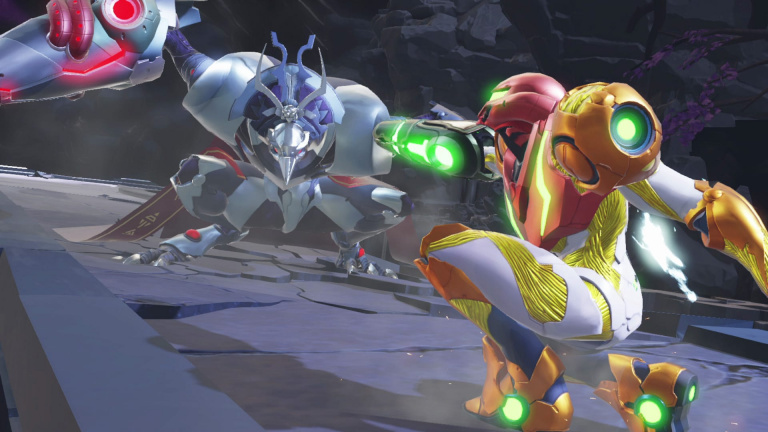
The Metroid series is often lauded for the sense of isolation it offers and the tension of trekking through unknown territory, but Dread leans into a different direction, with a terrain that organically resonates with Samus and her evolving abilities, almost as if it were a character of the campaign in its own right. The vast expanses of Planet ZDR makes its presence felt mere minutes after the game begins, with a setting that’s incredibly rich with detail, yet dense and ever-sweeping with a layout that tracks endless distances yet still effortlessly intertwining back and forth through roads past traveled. A lot of the level design’s charm isn’t just in the architecture of the stages but in the 2.5 “diorama” presentation of the environment. This added perspective not only gives the world a physical depth to the secluded hellscape of ZDR, but a depth of personality as well—one that’s able to deliver these jaw-dropping moments every time a discovery is made. It’s the sort of feeling that makes traversal that much more endearing in Metroid Dread, all while still encapsulating that desolate vibe of the franchise—personally something that I felt Fusion never managed to do.
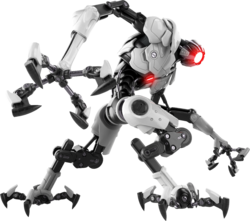 Control-wise, Metroid Dread is admittedly Hit-or Miss; the free-range aiming mechanics are more responsive and much easier to align for targeting, but there still isn’t a Lock-On mechanic of any kind, and lining up a shot at the right trajectory during an intense fight is often more frustrating than it is stressful. The more pressing issues with the Control lie in the frankly bizarre button-mapping, where more advanced techniques will require precise combination inputs, and as mentioned before, the process can be excruciating to perform in the middle of active combat. In terms of raw Gameplay though, Metroid Dread is subtle with its hooks, while refining what we’ve seen before with a staunch “if it ain’t broke don’t fix it” approach. For starters, Dread expands upon Samus Returns’ engine, only with a significant upgrade to the processing, animating at a super smooth 60 FPS without a hint of slowdown or frame drop during gameplay. The new Melee-Counter mechanic returns with a much better flow than before, and arguably a bigger role for many of the boss encounters of Dread, where instead of it being a flashy counter, it is instead vital for the typical “Ah-ha” moment where a weak point for the boss is revealed. Speaking of the Boss Encounters, Dread has some of the best the series has to offer—mainly because they aren’t just a challenge for the new skills you acquire but rather, an all-out litmus test on your ability to effectively use them in combat. Even when you do piece together the strategy needed to decimate the Big-Bad in the room, many of the bosses are pretty stingy with the opening you need to make them work, requiring a precise rhythm of input and patience to get you through the fight on top.
Control-wise, Metroid Dread is admittedly Hit-or Miss; the free-range aiming mechanics are more responsive and much easier to align for targeting, but there still isn’t a Lock-On mechanic of any kind, and lining up a shot at the right trajectory during an intense fight is often more frustrating than it is stressful. The more pressing issues with the Control lie in the frankly bizarre button-mapping, where more advanced techniques will require precise combination inputs, and as mentioned before, the process can be excruciating to perform in the middle of active combat. In terms of raw Gameplay though, Metroid Dread is subtle with its hooks, while refining what we’ve seen before with a staunch “if it ain’t broke don’t fix it” approach. For starters, Dread expands upon Samus Returns’ engine, only with a significant upgrade to the processing, animating at a super smooth 60 FPS without a hint of slowdown or frame drop during gameplay. The new Melee-Counter mechanic returns with a much better flow than before, and arguably a bigger role for many of the boss encounters of Dread, where instead of it being a flashy counter, it is instead vital for the typical “Ah-ha” moment where a weak point for the boss is revealed. Speaking of the Boss Encounters, Dread has some of the best the series has to offer—mainly because they aren’t just a challenge for the new skills you acquire but rather, an all-out litmus test on your ability to effectively use them in combat. Even when you do piece together the strategy needed to decimate the Big-Bad in the room, many of the bosses are pretty stingy with the opening you need to make them work, requiring a precise rhythm of input and patience to get you through the fight on top.
That’s the overall theme of Dread really, endurance; ironically the tough boss-battles are the one objectives where the player will find themselves having the most control in. Sure a lot of the new abilities that make their debut in Dread definitely enhance the slick pace of travel and combat efficiency, but they also work well at showcasing the big element introduced in this entry where your endurance will be really tested—stealth.
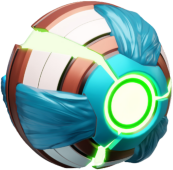 After the initial teaser, players were introduced to a new character named E.M.M.I. which is short for “Extraplanetary Multiform Mobile Identifier”, a heavily armored Robot Probe designed to research uncharted sectors no matter how hazardous the conditions. These units were sent ahead to Planet ZDR by the Federation to investigate the supposed reappearance of the X-Parasite, only to go radio silent weeks later—creating the impetus for Samus to go as she’s the only living thing in the universe that’s immune to the Parasite. It doesn’t take long after your arrival to learn that some serious shit is up, as a new enemy appears to reinforce the Series’ Status-Quo of nerfing the heroine down to her most basic abilities and setting loose reprogrammed E.M.M.I. bots across the planet. Dread makes it abundantly clear (like, to an almost obnoxious degree) that no matter how much power Samus recovers, she is no match against E.M.M.I. and her only option is to run or hide whenever one gets near. Encountering these Mechanical God-like Golems is certainly a harrowing experience, but I wouldn’t go as far as to say that it’s a suspenseful experience like their debut had implied—just a really anxious one.
After the initial teaser, players were introduced to a new character named E.M.M.I. which is short for “Extraplanetary Multiform Mobile Identifier”, a heavily armored Robot Probe designed to research uncharted sectors no matter how hazardous the conditions. These units were sent ahead to Planet ZDR by the Federation to investigate the supposed reappearance of the X-Parasite, only to go radio silent weeks later—creating the impetus for Samus to go as she’s the only living thing in the universe that’s immune to the Parasite. It doesn’t take long after your arrival to learn that some serious shit is up, as a new enemy appears to reinforce the Series’ Status-Quo of nerfing the heroine down to her most basic abilities and setting loose reprogrammed E.M.M.I. bots across the planet. Dread makes it abundantly clear (like, to an almost obnoxious degree) that no matter how much power Samus recovers, she is no match against E.M.M.I. and her only option is to run or hide whenever one gets near. Encountering these Mechanical God-like Golems is certainly a harrowing experience, but I wouldn’t go as far as to say that it’s a suspenseful experience like their debut had implied—just a really anxious one.
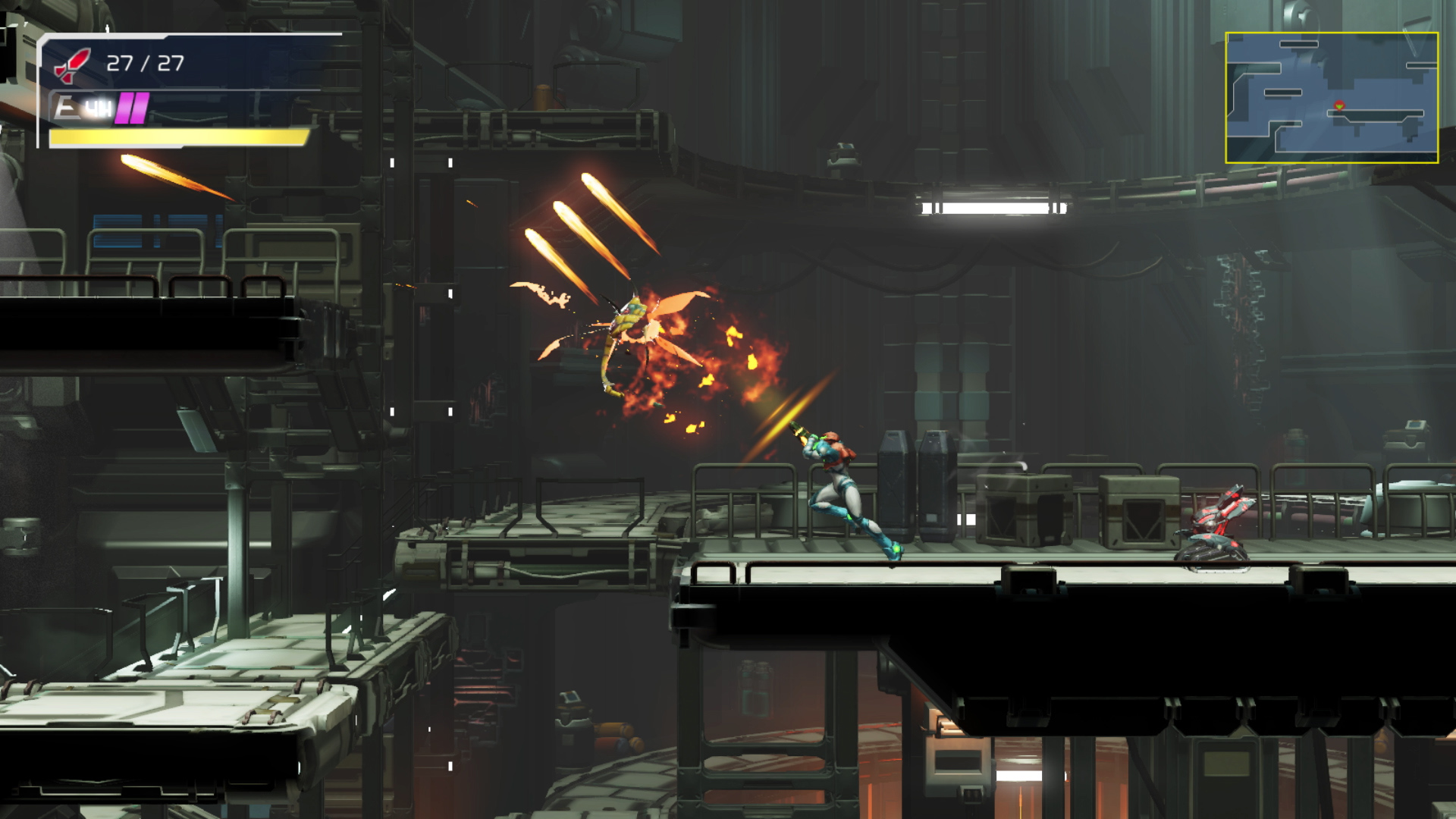
One of the key factors behind this is how limited the extent to which these indoctrinated machines hunt you with the threat of E.M.M.I. being entirely territorial. Even though players will have little choice in venturing over these borders to chase the next bread crumb of the trail, the danger these Killer Automatons pose is undeniably weakened by how anticipatory the whole process is. Regardless of how defined the enemy lines is with this approach, the concept of the “Hunter becoming the Prey” is still a rather effective one, at least within the conceit of Metroid completion anyway. With only two narrow opportunities to defend yourself with a Melee Counter during an E.M.M.I. encounter, the odds of getting out of the situation alive is slim to none. Even when you’re successful with your time, all you strike does is stun the homicidal unit temporarily, buying a few more seconds of time to escape the E.M.M.I. before it snaps out of it and resume the hunt. If you are felled by the Near-Indestructible Machine, however, players will simply be sent back to the entrance of the last E.M.M.I. door they entered, and the biggest issue with the E.M.M.I. mechanic. Warping back to the point of interest with the push of a button is a pretty tame consequence, in contrast, admittedly sucking a lot of the air out the “fear” the gimmick is supposed to instill in players. The biggest consequence from a loss to an E.M.M.I. comes from the potential time-sinks these foes can demand from those who’re trying to get the best “Ending” out of the Dread’s campaign as Metroid’s Speed-running trope is in full force here, but yeah, aside from that, the process is more nerve-inducing than anything else.
That isn’t to say that the dynamic is a total wash by any means though as there are plenty of moments of genuine tension for when you are able to successfully maneuver around an E.M.M.I. without detection. The satisfaction derived from these brief brushes with death is especially enjoyable when you start applying Samus’ new enhancements to the stealthy conventions you would never associate with otherwise. Scenarios like shooting a missile against the opposite end of a corridor as a distraction to an E.M.M.I.’s auditory response for example, or trekking through any cramped tunnels you can with a slide instead of your Morph-Ball for the added momentum and maneuverability.
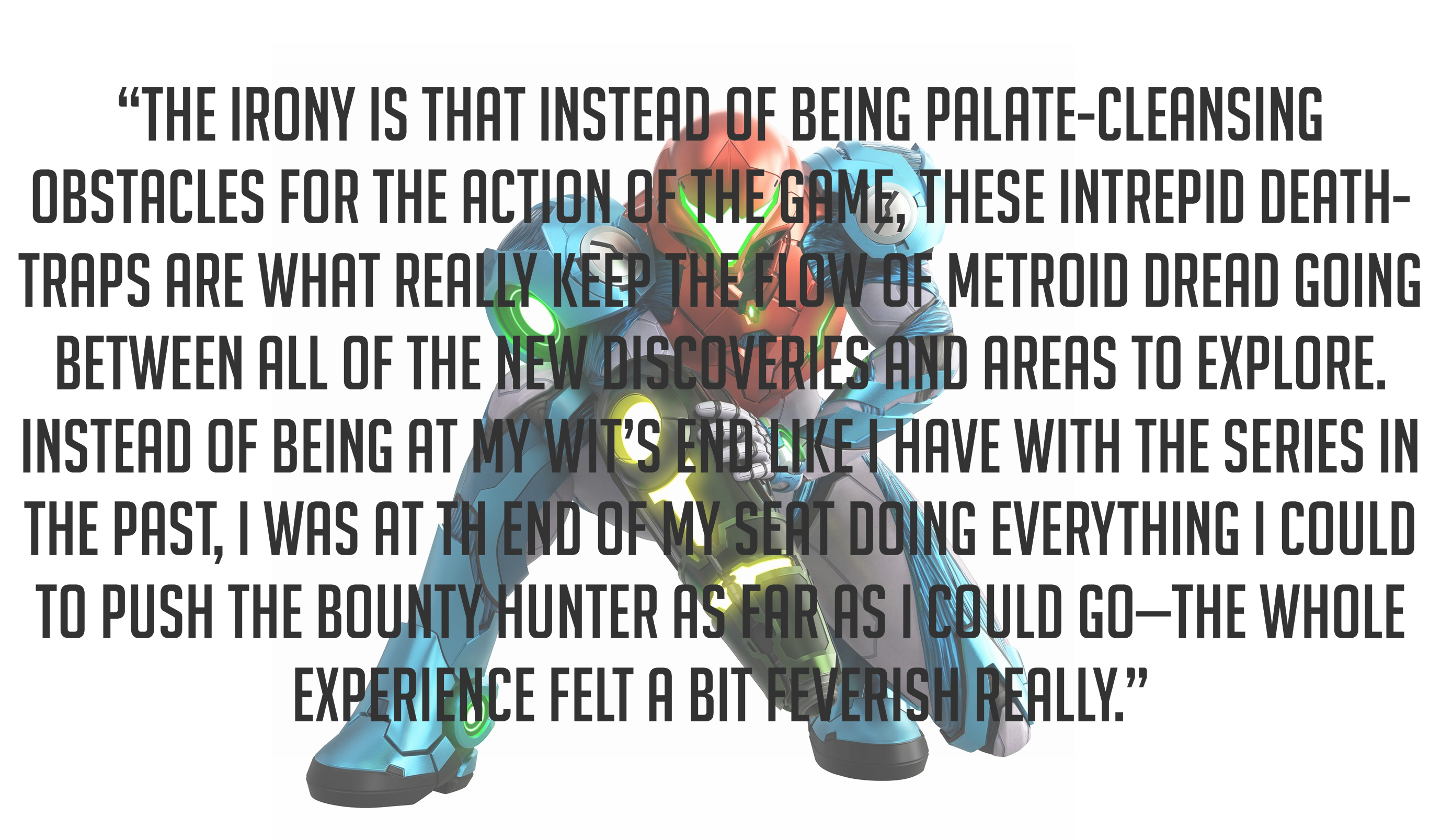
The Metroid formula has always thrived from the sensation of character growth and the varying paths it gives players to ascend to their fullest potential—and that’s where the E.M.M.I. mechanic in Dread is undeniably brilliant. No matter how powerful you become, the perils of an E.M.M.I. will always find a way to render Samus utterly helpless to its ravages, pushing players to survive their situation until they can find the Omega weapon to neutralize it instead of building her up to overwhelmingly overcoming them from the onset. Although the gimmick does honestly start to wear out the closer you get to the end-game, it still manages to deliver on those little moments of victory that come with solving the puzzle behind each E.M.M.I. you face down and the little control you have in those situations.
The irony is that instead of being palate-cleansing obstacles for the action of the games, these intrepid death-traps are what really keep the flow of Metroid Dread going between all of the new discoveries and areas to explore. Instead of being at my wit’s end like I have with the series in the past, I was at th end of my seat doing everything I could to push the Bounty Hunter as far as I could go—the whole experience felt a bit feverish really.
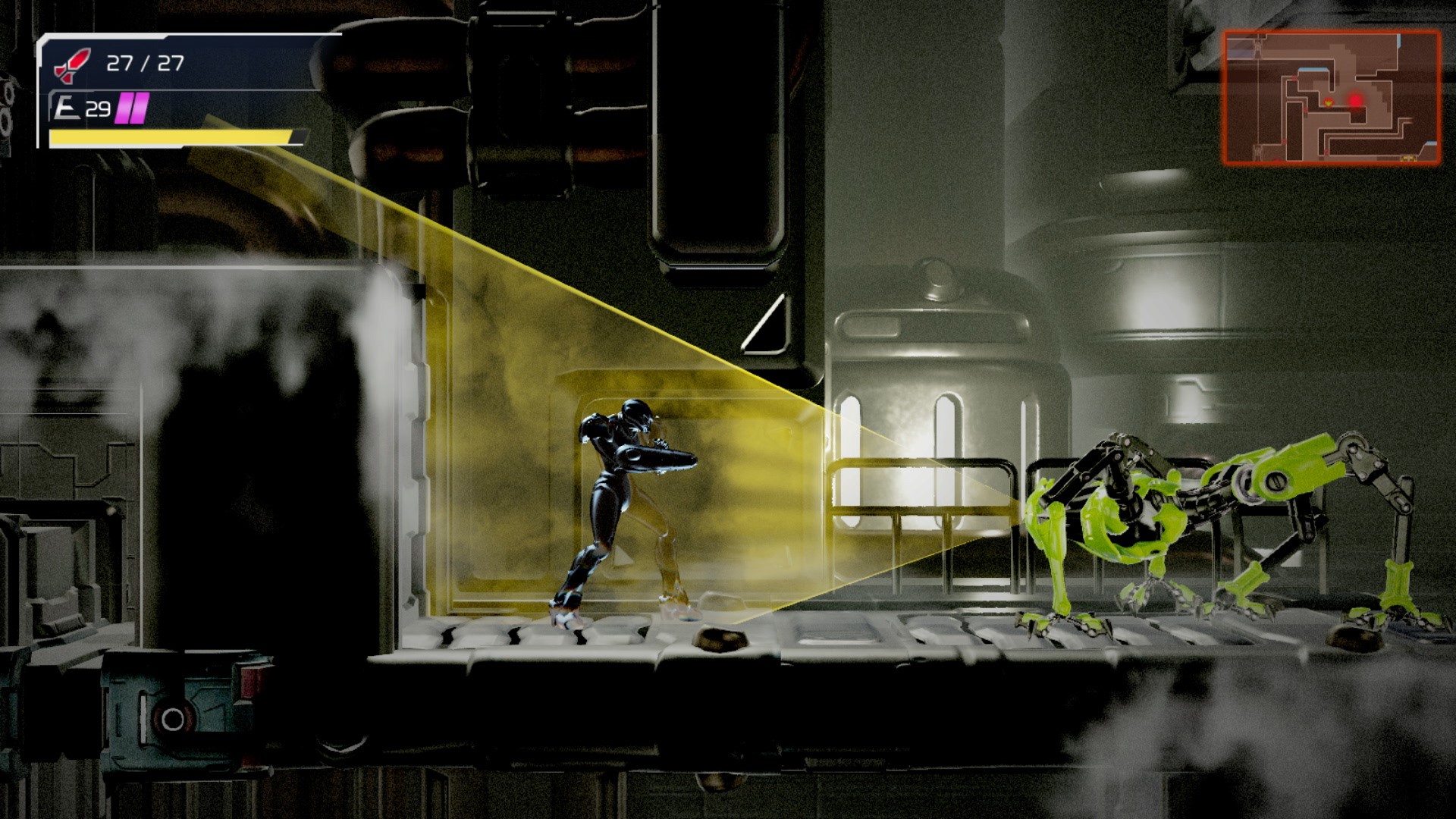
It’s a feeling I haven’t felt with the property since I first played Super Metroid, but far more palatable and nourishing with Dread—which is why I stand by my statement that Metroid Dread is the best entry of the franchise.
The only real complaint that I have with Dread is just how quickly it all ends. The climax does the experience justice, sure, but it also leaves way too much to the imagination when it comes to the future of Metroid—a topic that’s always been a sore spot for fans that have already been starved by the lengthy gaps between sequels these last couple of decades…





 GeorgieBoysAXE
GeorgieBoysAXE




